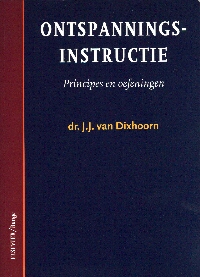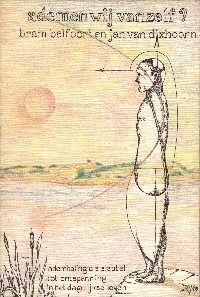
English summary of Breath Relaxation
Breath Relaxation
Principles and practice.
This book consists of six main chapters, which can be read separately. Together they form a practical and theoretical manual for professional utilisation of a whole range of relaxation procedures, encompassing much more than the classical methods of progressive relaxation, autogenic training and the relaxation response (Ch 2 & 3). Relaxation is broadly defined as all procedures that enhance 'internal self-regulation'. Contrary to the common view, there is not a linear relationship between a specific procedure and a specific effect. Self-regulation is achieved by way of several processes within the person or patient (Ch 4). Professional instruction means to distinguish the content of the instruction from the effect on the individual and to match the procedure to the response of the person/patient in the course of the class or therapy (Ch 5). One of messages from the book is that relaxation and breathing instruction, when it is done in this way, is a treatment in its own right (Ch 6).
Chapter 2. Relaxation methods. A description of several existing methods, to illustrate the use of different modalities and to expand the concept of relaxation beyond its usual image as reduction of tension. The concept of internal selfregulation is introduced, derived from a model of biofeedback as a process of internal communication between conscious perception and the functioning of the living organism.
Chapter 3. Modalities of relaxation instruction: the core elements constitute the options of the therapist. Described are: choice of posture, direction of attention (active, passive), movement (single or repetitive; gross or fine; peripheral or central), respiration (indirect influence through coupling to movement or by uncoupling from movement; direct influence on respiration), instructing what to do (nonsuggestive) or what to feel (suggestive), having the person verbalise his/her experiences, pace of instruction, touch and manual techniques, feedback (verbal, manual, instrumental), location of instruction in relation to location of tension problems (close, distant), and homework assignment.
Chapter 4. Processes: Seven main processes to achieve internal self-regulation are described as well as quantitative and qualitative indicators of their occurrence. Starting with tension reduction, both in rest (passive relaxation) and during activity (active relaxation), the shift in autonomic balance towards a more trophotropic state is discussed as well as a shift in attentional state from more a active concentration to a passive attention and attitude. These three processes can occur together or separately or even in opposite direction, resulting in numerous possible responses to the same instruction. Fourthly, body awareness is defined as a main process, not of tension reduction but of increased internal sensory feedback. The consequences of a disturbed relationship between the conscious self and his own living body is described as a major source of tension, unrest and insecurity. Unpleasant experiences can be the result of increased awareness, which are nevertheless important for self-regulation. Next, body awareness is applied to the functions of body movement and respiration. These three processes are essential for generalisation of relaxation to daily life, but are rarely recognised as relaxation effects. The concept of dysfunctional respiration is introduced. It is able for instance to solve the controversy around the 'hyperventilation syndrome'. Assessment criteria for (dis)functional breathing and (dis)functional movement are given. They are important to judge the way that instructions are carried out. Finally, cognitive restructuring means the process of reframing common misunderstandings of relaxation, as well as of verbalising one's experiences and reinterpreting them. This process remains usually implicit. Once it is made explicit, it supports the view of relaxation as a cognitive-behavioural intervention.
Chapter 5. Giving instruction: the basic procedure for instruction in this book is the use of nonsuggestive methods, clear proposals to the person of what to do and to let the experiences of the person/patient be completely open. Any response is possible and suggestions are avoided. The instructor is nonjudgmental, not normative, but interested in the person's response. The steps towards this attitude are described for the instructor as well as a set of rules. The purpose is to have the individual take his/her own experience seriously and to optimise the context for the growth of his/her internal self-regulation, instead of trying to do what is expected. The chapter also describes the modality of having the person verbalise their experience.
Chapter 6. Implementation: there is no description of specific applications, research effects or indications of relaxation. Instead, the assessment of the level of excess tension and the individual margin for internal self-regulation within the context of somatic, social and psychic conditions is described. This leads within a few sessions to the decision to either stop relaxation or continue it.
The instructions are designed as mini-experiments to assess the response. Three levels of tension are distinguished. A. The response of normal, healthy individuals to the instructions is a concrete, positive experience. Most of the processes are clearly occurring. In patients with specific problems the response is less clear and it is more difficult to find an instruction that the patient can practice. The level of excess tension is directly proportional to this difficulty. B. When an instruction is found that is feasible for the patient and leads to a clear process that influences the problem, there is reason to continue, because apparently the problem is tension-related. C. When a trained instructor cannot find a feasible instruction or the process is unclear, then excess tension is very high, the margin for self-regulation is too small, or the conditions are unfavourable. Instruction is stopped unless there is sufficient motivation to try a little longer or the conditions are treated simultaneously.
Chapter 7. The final and largest chapter contains almost 50 instructions, in sitting, standing and recumbent position. They cover the procedures of breath relaxation, including the modalities of posture, attention, movement, respiration and 10 manual techniques, which illustrate the modality of touch. The reader is supposed to work through and practice all of these. Suggestions are given how to do that in a small group of colleagues. Each instruction is followed by a description of points to observe while an instruction is done, and of some common responses. The experiences of trainees in doing instructions by themselves and discussing their perceptions is the major way of training and learning how to use breath relaxation in practice.
There is a list of references and an index.
Example of an instruction
'Supine position, pulling the feet up'
|
Lie down on your back, the legs extended, with a folded towel under the head |
notice how your legs are lying |
|
Pull the toes towards you, hold the feet in this position, continue breathing |
notice where you feel tension ... you are increasing tension deliberately ... where do you feel it |
|
Stop it, relax the feet; wherever you noticed the tension increasing, let go |
pay attention to the decrease of tension; what you tensed up, you stop doing that and let go now |
|
(Repeat this two times) |
(say: notice time the exact places where tension changes are perceptible ... this can be different each time..; and discuss it with the patient) |
|
Leave the legs, let them lie down quietly |
compare how the legs are now lying with before ... how is your back ... the pelvis |
|
(when the instruction is done well and the subject reports clear changes, continue, otherwise repeat the first step) |
|
|
Pull up the toes towards you, hold the feet in this position |
notice whether this influences your lower back .. abdomen .. breathing |
|
Relax the feet and legs |
feel the tension decreasing in the legs and notice how your breathing is now |
|
(Repeat this 2 -3 times) |
(ask: what is the difference between breathing with tight and loose legs?) |
|
(when respiration is easier or slower with relaxed legs, proceed to third step; when respiration remains quick or uneven, try first 'audible exhaling') |
|
|
Now let's combine breathing and pulling up the feet |
|
|
Breathe in normally through the nose ... when inhalation is ready wait a second, pull up the toes and feet, keep them in this position and exhale through the lips ... when exhalation is ready, relax the legs completely, breathe in softly and quietly |
as if you are exhaling by pulling up the feet ... and as if you are inhaling by relaxing the legs and feet |
|
Breathe normally 2-3 times and let the legs lie quietly, and then combine again |
repeat the combination as often as you like, preferably until the combination feels easy |
|
Stop it, breathe normal |
compare how your legs are lying ... how is your back ... your breathing ... how is your attention ... your mood |
|
Sit up, wait a little and then get up |
compare how you are standing now ... how you feel yourself ... and how you are breathing |


A randomised controlled clinical trial of breathing awareness as a relaxation method in the rehabilitation after myocardial infarction. Rotterdam, 1991.
Available through the author: dixhoorn@euronet.nl